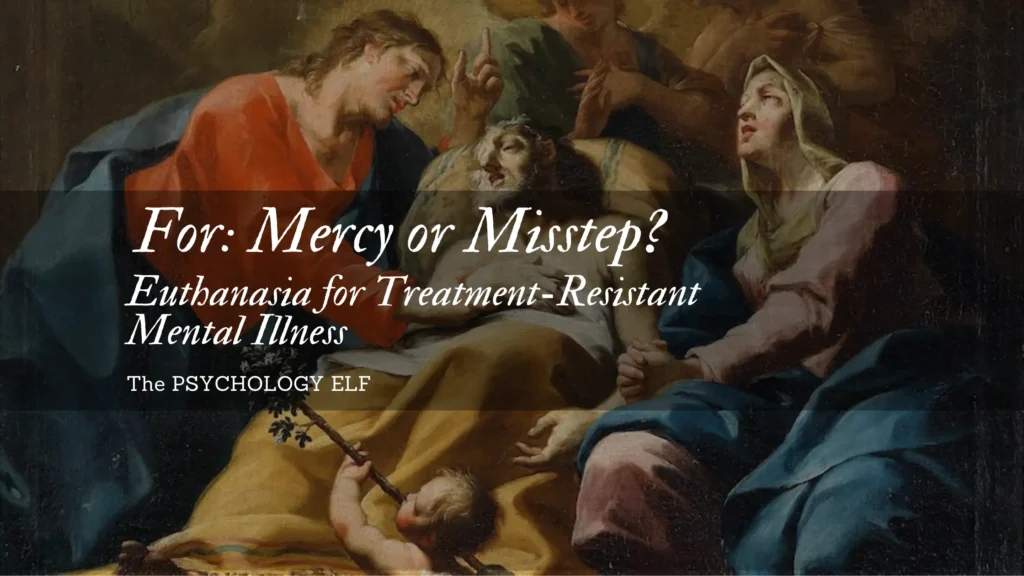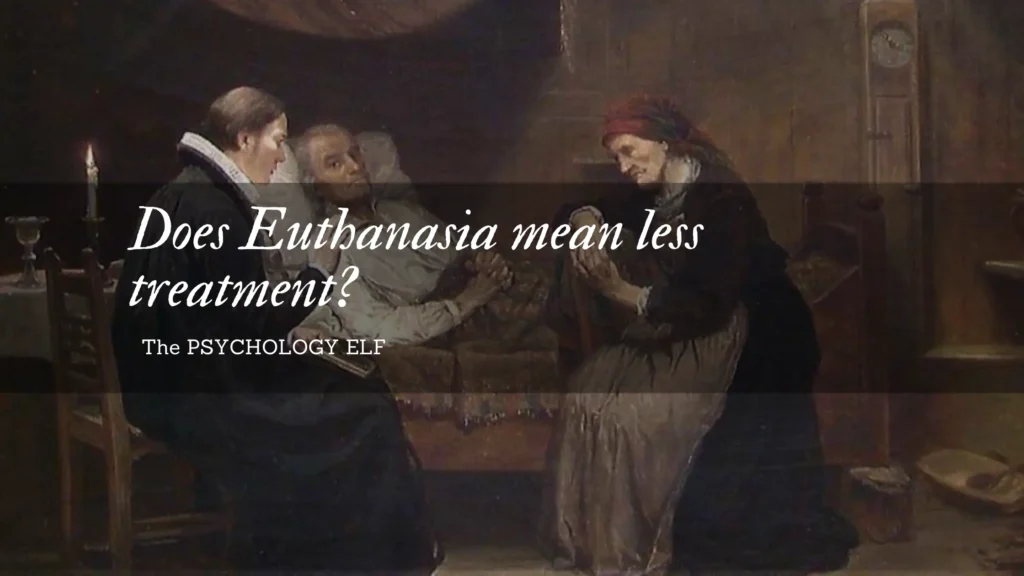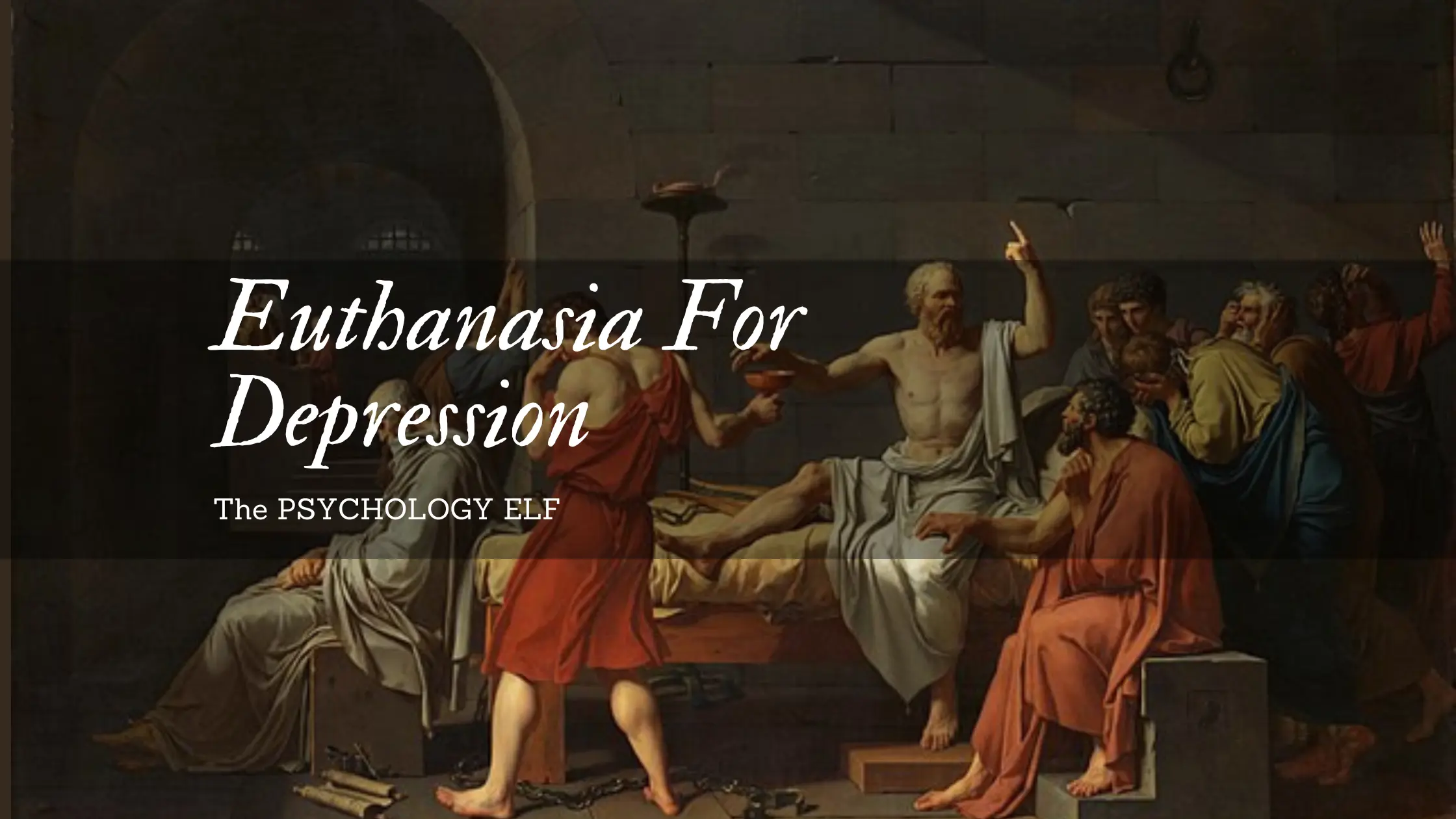Euthanasia for mental illnesses is already a topic fraught with legal, emotional, and ethical complexities. Given this backdrop, the recent case of Zoraya ter Beek, a 28-year-old Dutch woman who has chosen euthanasia due to her severe and treatment-resistant mental illness, has reignited global discourse around the topic.
From people criticising her end-of-life decisions to the insensitive and over-sensationalised media portrayal of mental health issues in general, Zoraya’s case is fraught with complexities that demand closer scrutiny from the public.
So, the article you’re reading will go over the nuances of the issue with the help of a clinical psychologist, Raksha Rajesh. Hopefully, by the end, our understanding of euthanasia and how it works will be better.
Difference Between Suicide And Euthanasia For Depression
Before we venture any further into this article, there’s something that needs to be cleared out— the difference between suicide and euthanasia. Many people use the terms interchangeably, confusing them about their ethical and legal meanings. Furthermore, this lack of clarity might contribute to the public outrage about ter Beek’s decision.
Suicide is considered to be a hostile and impulsive act that’s done without any medical involvement by an individual to end their life. In contrast, euthanasia is a medical procedure that requires informed consent and medical supervision and is also legal in some countries.
Most importantly, getting an application for euthanasia approved is a complex process that mandatorily needs to meet strict criteria (more on this in the coming section).
With this, I hope you understand Zoraya ter Beek’s end-of-life discussion falls well within the legal framework of the country she lives in, and it is neither suicide nor an act of “giving up”/ “choosing the easy way out”, etc., in any way.
How Does Euthanasia Work?

To be able to understand the for and against sides of euthanasia, we must first see how the process works. After all, what criteria is it that gives people the go-ahead to choose death over life? Well, below is how the process of euthanasia for mental illnesses (from applying to getting it approved) works.
However, please know that the process mentioned is only for educational purposes and may not even apply universally. The general process (wherever it’s legal) typically involves the following steps:
Eligibility
The eligibility to submit a request for euthanasia is that an individual must be suffering from “unbearable physical or mental suffering that cannot be alleviated”. A well-documented history to show treatment resistance is also needed.
Request
An appeal for euthanasia has to be filed by the person in writing. All one has to do is to write down their name, the date, and a statement that says, “I want euthanasia”.
Evaluation
Submitting a request doesn’t mean that it will be approved. In 2016, in the Netherlands, only 5% of the 1100 people who requested Euthanasia had their request granted.
Multiple doctors review the request and conduct a thorough psychological assessment evaluation. The assessment entails standardised interviews, decision-making capacity tests, etc., to ensure clarity and informed nature of the patient’s choice. The tests also ensure that their wish to die isn’t solely stemming from their psychiatric illness.
Waiting Period
Once a request for euthanasia is submitted and has been assessed, a mandatory waiting period is announced before the final decision is given. This allows reflection and re-evaluation to avoid any impulsive decisions.
The length of the period depends on several factors, such as the severity of the illness or whether the person requesting it still doubts their decision. The waiting period is extended if there are any fluctuations in what they opt for.
Final Evaluation
Just before the final procedure is to take place, the doctor conducts one last evaluation of the patient to check if they still wish to be euthanised. Patients have the right to withdraw from the process whenever they want.
Procedure
The process typically involves the clinician first administering a sedative injection to induce a deep sleep or loss of consciousness, followed by a lethal injection, administered intravenously, that causes death in a minute or two.
For & Against Euthanasia For Mental Illnesses
Things are not black and white. Questions like, “Should Euthanasia be legalised?” do not have a clear “yes” or “no” answer. The ethical considerations surrounding euthanasia for individuals with mental illnesses are layered with complexities.
Both the supporters and the opponents raise valid points when presenting arguments for and against euthanasia. Being aware of the for and against sides will help you form an informed opinion.
In Support Of Euthanasia For Mental Illnesses (Treatment-resistant and Terminal)

While researching for this article, I found a general trend in articles that also discussed euthanasia for mental illnesses. Most of them heavily cited why they were against euthanasia, whereas not much was found in support of it. So, here’s a bit in support of euthanasia for mental illnesses (treatment-resistant and terminal):
Individual autonomy:
This will sound controversial, but according to Raksha, euthanasia (within legal limits) can be very empowering. It gives individuals control over their bodies, the ability to choose their treatment or plan, and their end-of-life decisions (these decisions are still needed to meet the legal and medical framework).
Right to die with dignity:
Euthanasia offers what suicide lacks: the right to die with dignity. Legalising euthanasia allows individuals to choose their time and manner of death and put an end to their suffering caused by a terminal illness in a dignified way.
Compassion and relief from endless suffering:
Respecting the wish of a terminally ill patient to put an end to their suffering, even if we don’t fully understand their choice or support it (but it still has to be approved according to the criteria given), is a compassionate thing to do.
Potential cost savings:
Euthanasia can help reduce healthcare costs that would otherwise be required to prolong the life of a terminally ill individual.
Reduced burden on caregivers:
Euthanasia can alleviate the emotional and physical burden on caregivers who will otherwise have to watch their loved ones helplessly suffer from a terminal illness, knowing that there is no end to it.
Against Euthanasia for Mental Illnesses (Treatment-resistant and Terminal)

By being aware of the potential benefits that legalising euthanasia can offer, it becomes possible to have a more informed conversation on the topic. But, we still need to consider some arguments against euthanasia to have a more balanced perspective.
Sanctity of life:
Opponents of the law believe that life is sacred and should be protected at all costs.
Potential for coercion:
The above two points, “potential cost savings” and “reduced burden on caregivers”, have a flip side, too. It can pressure individuals into choosing euthanasia for the very same reasons. Plus, legalising euthanasia could normalise choosing it and make coercion easier to occur in situations where an individual may be financially dependent or socially isolated.
Future treatment breakthroughs:
Medical sciences are ever-evolving. New treatment options for currently, untreatable conditions can emerge so individuals do not need to give up on their lives, thinking that their conditions are beyond treatment.
For example, it is said that most of the time, the symptoms of BPD tend to lessen with age. So, should someone in their 20s suffering from it choose euthanasia or wait for further treatment breakthrough?
Misdiagnosis:
Diagnosing a treatment-resistant mental illness is a complex process, and a risk for misdiagnosis is always present. So, the chances that an illness can be wrongfully made eligible for euthanasia, which can then result in something irreversible, are always present.
Euthanasia Can Become A Common Choice:
Another concern that people have is that with euthanasia being made legal, it will be a common choice for people with psychiatric illnesses who may already be suicidal. For example, Aurelia Brouwers, who chose euthanasia and got her request approved, said that the only time she felt happy was when she was talking about death.
However, please know that “unbearable suffering” is not a criterion alone for someone’s application to be approved. Again, the clinical standards and criteria must be met (discussed above).
There’s still more to say in support of and against euthanasia. Understanding arguments on both sides can equip us to have a more nuanced discussion and opinion.
Moreover, you will find that the answers to questions concerning the moral and ethical aspects of euthanasia can be subjective. So, it also does come down to the delicate balance between respecting an individual’s bodily autonomy and ensuring that those requesting it have the mental capacity to choose AND rule out any kind of abuse of the vulnerable.
Does Legalizing Euthanasia Mean Less Treatment?

Belgium’s law around Euthanasia has come under fire as deaths due to euthanasia have been on the rise in the country ever since the option was legalised in 2002. Similar statistics can be seen in other countries where euthanasia is available. Why would that be? Does it mean that people are choosing this method more readily than ever? Do these numbers point towards the growing inefficiency of the healthcare system?
Well, the reasons are a complex interplay of several factors at play. Increased awareness about euthanasia being available as an option and it slowly being accepted in society as a means to put an end to the suffering of those with a treatment-resistant illness plays a role.
This, coupled with advancements in diagnosis, could lead to better identification of cases that may be incurable or treatment-resistant. Additionally, greater emphasis on personal agency in healthcare and compassion for those wanting to choose euthanasia might be another reason contributing to the rise.
However, on the flip side is the slippery slope argument we addressed above. With euthanasia available as an option, individuals might have a decreased motivation to fight for their recovery from the mental illness that they suffer from. However, please note that an individual needs to have tried all treatment options available before euthanasia is approved for them.
Furthermore, when it comes to potentially vulnerable individuals, there might be added pressure for them to choose euthanasia, maybe to relieve their families of any burden or the financial stress that their illness is causing. It could also be because of the existing stigma around mental illnesses in society that may be making them consider euthanasia.
So, there have to be stricter or stricter (in some cases) safeguards that can help take care of the potential risks that arise along the way. According to Rakha, “(with legalising euthanasia), the only thing is the legality has to be very, very tight. People need to review it carefully, the panel (in just like countries like Switzerland, etc.) there needs to have a particular code of conduct that needs to be followed before even allowing physician-assisted suicide, which is what euthanasia is.”
Media Reporting And Awareness

Armed with this understanding of euthanasia for mental illnesses, let’s revisit Zoraya ter Beek’s case. More specifically, let’s look at the reporting of the case:
- “Physically healthy woman will be euthanised next month”,
- “Woman, 28, Opts for Euthanasia Rather Than Living with Mental Illness: ‘I’m a Little Afraid of Dying‘”,
- “A 28-year-old woman in the Netherlands decides to end her life despite good physical health”.
What’s wrong with these headlines, you might ask? A mental health professional will reply to many things.
For example, a common term in these headlines is “physically fit.” Zoraya’s physical fitness is somehow given a lot of footage. While you might argue that this proves physically healthy people can suffer from mental health conditions—and that is true—these headlines also contribute to the opposite.
One of the many things is that these headlines fixate on her physical appearance and health instead of her mental issues, even though mental illnesses do not discriminate among individuals based on their outward appearance.
Furthermore, not many of these articles delve into ter Beek’s mental health struggles, the treatment options she has explored and exhausted, and the reasons that ultimately led her to choose euthanasia.
It is as Raksha Rajesh says, “I think that in general, people don’t know how to report about mental health, illness or any of the mental health struggles, especially online. If a journalist wants to publish anything concerning health (physical or emotional), there’s a lot of insensitivity around it.”
She further added, “With suicide, I don’t even want to go there; there’s so much sensationalisation instead of reporting news, and the way the words are used is to make it more clickbaity that is very problematic.”
To explain why it was so problematic, she added- “Linguistics matters in the making or breaking of society— conversations, language, the way that you speak, and the way that something has been written have changed the world, and that is something that needs to be thought about. ”
Do you know the most straightforward solution she suggested to tackle these problems? Consult a mental health professional before writing anything about mental health or struggles. Furthermore, journalists must also educate themselves on how to report Physician-Assisted Death, keeping ethics in mind. It’s not that hard, you know?
Parting Words
By now, you will have understood how and why euthanasia for mental illness is a topic interwoven with complexities on multiple different levels. This article walked you through arguments for and against euthanasia, ethical considerations, how the process works, and the delicate dance between personal autonomy and the potential for abuse.
While Zoraya ter Beek’s story has renewed debate, the conversation around euthanasia for depression and other mental illnesses is still not over. Both sides present strong arguments, yet more research is needed to understand it fully.
Furthermore, regarding media reporting cases like Zoraya’s, remember what Raksha says: “Half-baked information is worse than no information. So, do not believe it until and unless proper information is reported. Just take information for the sake of it. It’s just information, and that’s about it. Know that there’s so much more behind the story.” She further adds, “Media houses must report everything sensitively. It (things like these) is not for sensationalisation.”
Until then, let’s remember to have open, respectful, and informed discussions around topics such as euthanasia and people choosing the process with the sensitivity and compassion they deserve.
Sources Used
- Steinbock, B. (2017). Physician‐assisted death and severe, treatment‐resistant depression. Hastings Center Report, 47(5), 30–42. https://doi.org/10.1002/hast.768
- NHS Choices, NHS, 12 July 2023, www.nhs.uk/conditions/euthanasia-and-assisted-suicide/.
- About NVVE (right to die). NVVE. (n.d.). https://www.nvve.nl/about-nvve
- Evenblij, K., Pasman, H. R., Pronk, R., & Onwuteaka-Philipsen, B. D. (2019). Euthanasia and physician-assisted suicide in patients suffering from psychiatric disorders: A cross-sectional study exploring the experiences of Dutch psychiatrists. BMC Psychiatry, 19(1). https://doi.org/10.1186/s12888-019-2053-3
- Schweitser, F., Stuy, J., Distelmans, W., & Rigo, A. (2020). Assessment of patient decision-making capacity in the context of voluntary euthanasia for psychic suffering caused by psychiatric disorders: A qualitative study of approaches among Belgian physicians. Journal of Medical Ethics, 47(12). https://doi.org/10.1136/medethics-2019-105690
- Scopetti, M., Morena, D., Padovano, M., Manetti, F., Di Fazio, N., Delogu, G., Ferracuti, S., Frati, P., & Fineschi, V. (2023). Assisted suicide and euthanasia in mental disorders: Ethical positions in the debate between proportionality, dignity, and the right to die. Healthcare, 11(10), 1470. https://doi.org/10.3390/healthcare11101470
- Ubel, P. A., Scherr, K. A., & Fagerlin, A. (2018). Autonomy: What’s shared decision making have to do with it? The American Journal of Bioethics, 18(2). https://doi.org/10.1080/15265161.2017.1409844
- Maung, H. H. (2022). Externalist argument against medical assistance in dying for psychiatric illness. Journal of Medical Ethics, 49(8), 553–557. https://doi.org/10.1136/jme-2022-108431
- Grassi, L., Folesani, F., Marella, M., Tiberto, E., Riba, M. B., Bortolotti, L., Toffanin, T., Palagini, L., Belvederi Murri, M., Biancosino, B., Ferrara, M., & Caruso, R. (2022). Debating euthanasia and physician-assisted death in people with psychiatric disorders. Current Psychiatry Reports, 24(6), 325–335. https://doi.org/10.1007/s11920-022-01339-y
- Maung, H. H. (2022). Externalist argument against medical assistance in dying for psychiatric illness. Journal of Medical Ethics, 49(8), 553–557. https://doi.org/10.1136/jme-2022-108431
- Pressly, L. (2018, August 8). The troubled 29-year-old helped to die by Dutch doctors. BBC News. https://www.bbc.com/news/stories-45117163
- Dierickx, S., Deliens, L., Cohen, J., & Chambaere, K. (2017). Euthanasia for people with psychiatric disorders or dementia in Belgium: Analysis of officially reported cases. BMC Psychiatry, 17(1). https://doi.org/10.1186/s12888-017-1369-0
- De Hert, M., Loos, S., & Van Assche, K. (2023). The Belgian euthanasia law under scrutiny of the Highest Courts. The Lancet Regional Health – Europe, 24, 100549. https://doi.org/10.1016/j.lanepe.2022.100549
- Grassi, L., Folesani, F., Marella, M., Tiberto, E., Riba, M. B., Bortolotti, L., Toffanin, T., Palagini, L., Belvederi Murri, M., Biancosino, B., Ferrara, M., & Caruso, R. (2022). Debating euthanasia and physician-assisted death in people with psychiatric disorders. Current Psychiatry Reports, 24(6), 325–335. https://doi.org/10.1007/s11920-022-01339-y

